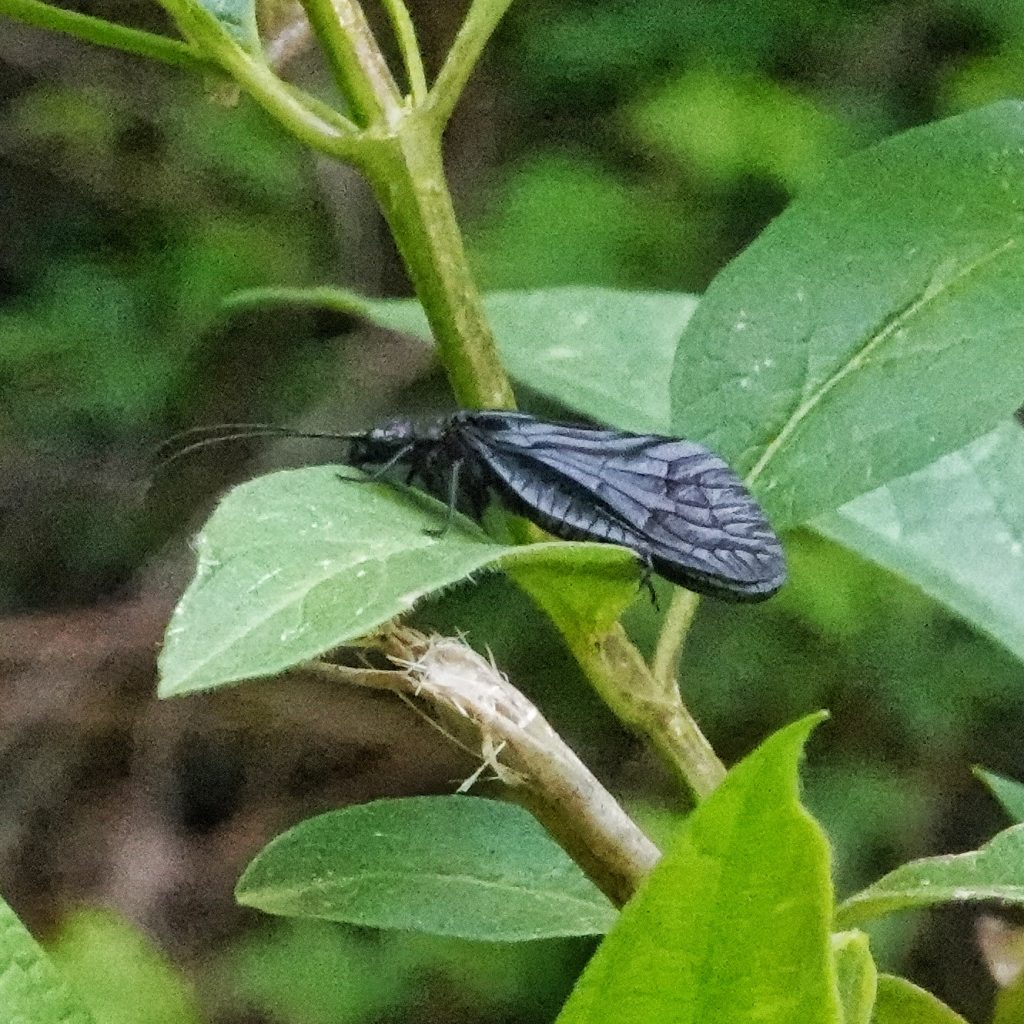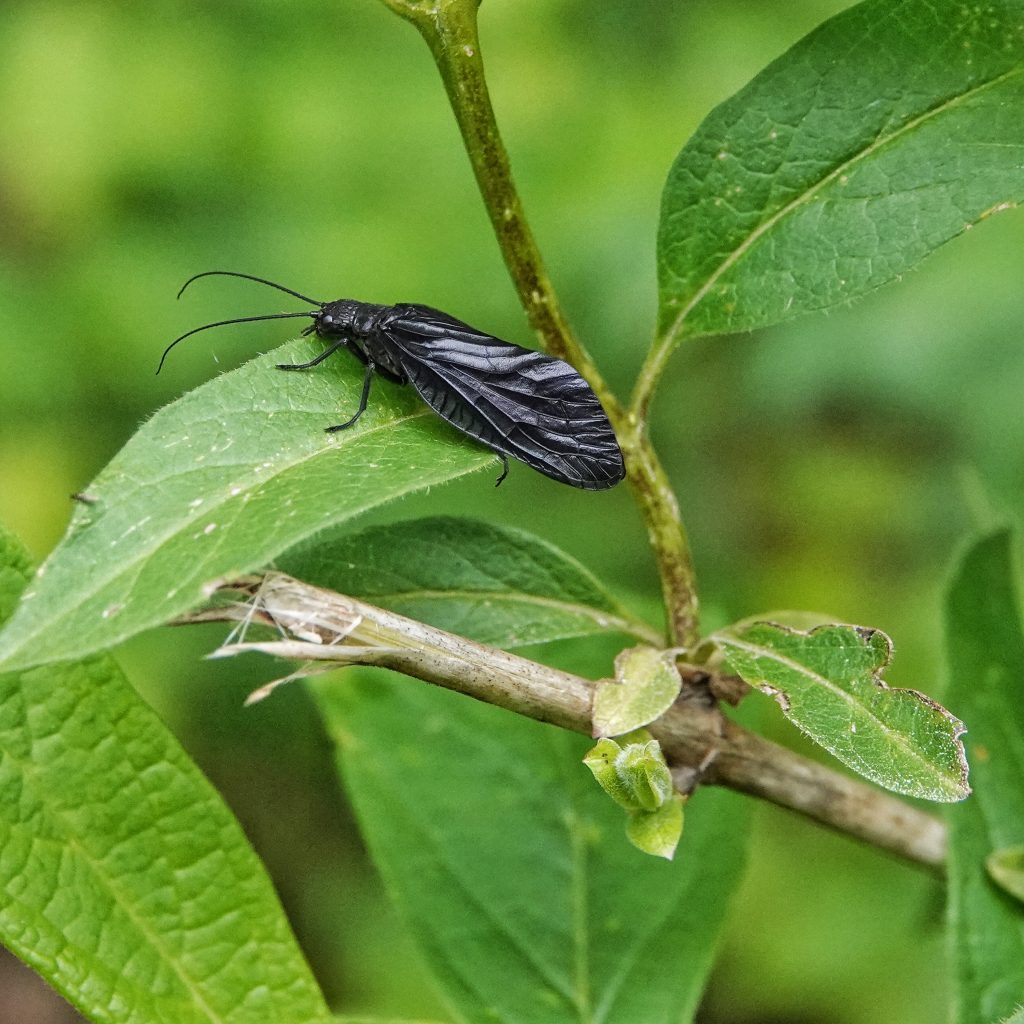
Though I have probably seen alderflies before, I don’t remember having done so, and, in my ignorance, probably assumed because of the tented wings that they were a caddisfly if I did see any. But I now know that caddisflies have hairy wings, and as soon as I saw the first of these specimens last week at Columbia Springs along Evergreen Hwy in Clark County, Washington, I was pretty sure they were alderflies. When I saw a second one a couple days later at the Carty unit of the Ridgefield NWR, I knew for sure it was.
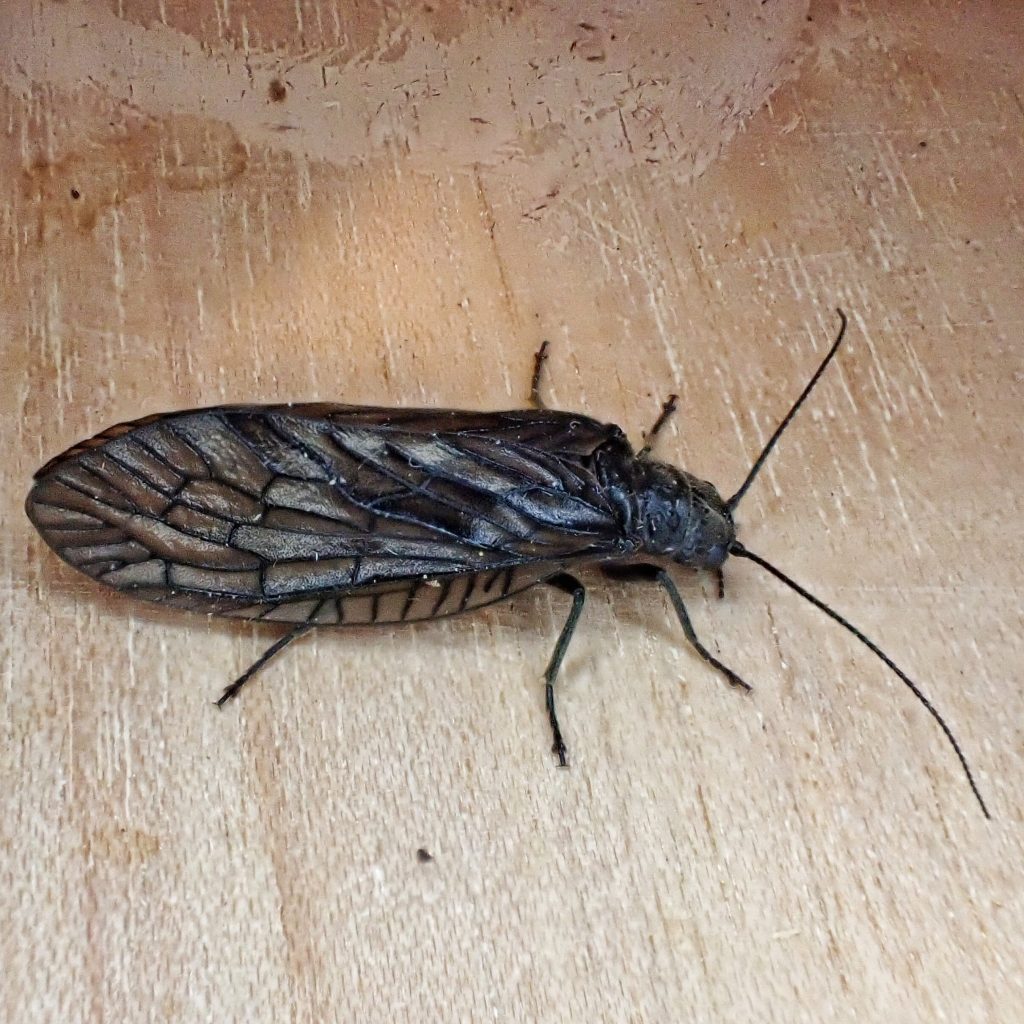
All of the alderflies in North America are in the genus Sialis, and positive identification to species requires microscopic examination of genitalia, which I’ve decided I’m just unwilling to try to do. However I think there is a very good chance these are both S. rotunda based on range and habitat, since the only other Sialis known from Clark County is S. californica, which is a stream dweller, whereas these two were both found near ponds, the preferred habitat of S. rotunda. I’ll talk mostly about what is known about Sialis rotunda, but will add information regarding S. californica when there is a significant divergence.
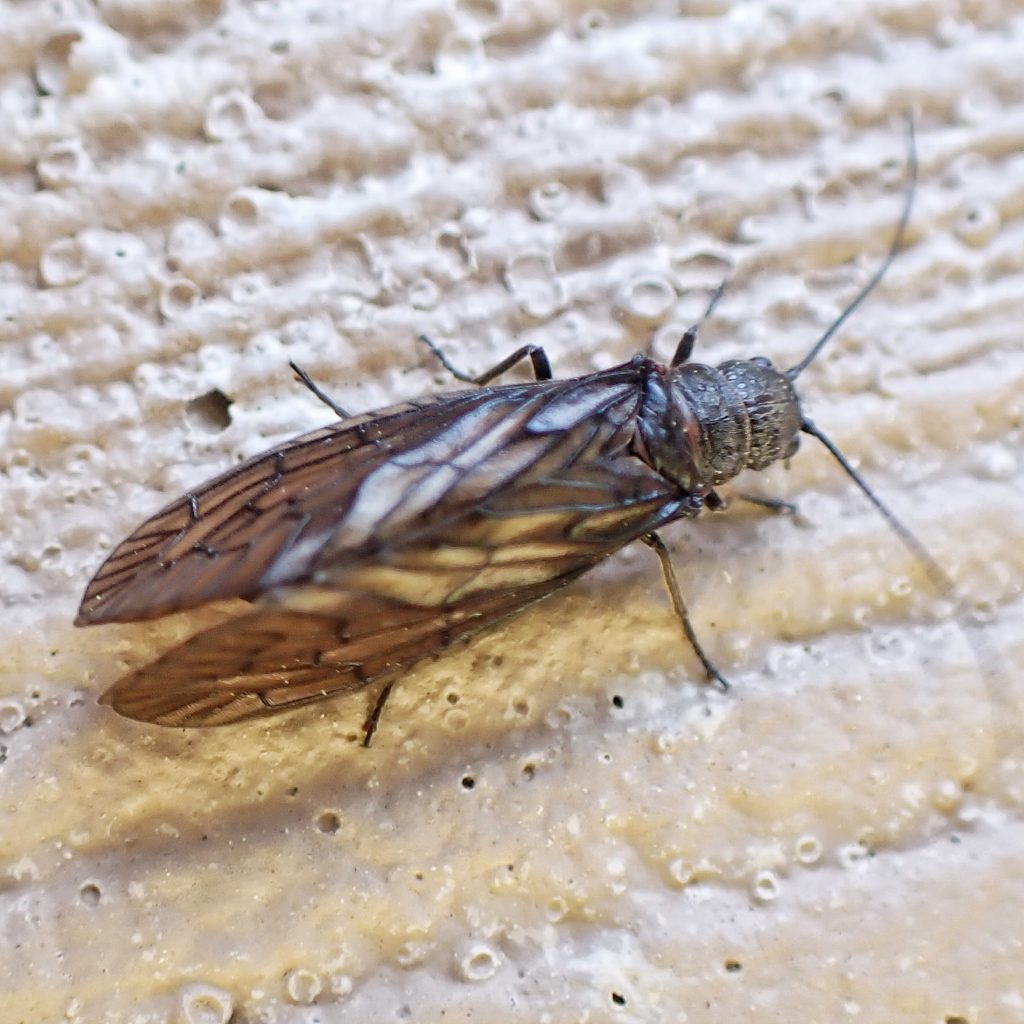
This is my first profile of anything in the order Megaloptera (dobsonflies, fishflies, alderflies). They were, until recently, lumped together with the lacewings and ant lions, and the snakeflies, in the order Neuroptera, but molecular studies (Engel, Winterton, and Breitkreuz ; 2018), in addition to significant morphological differences, have led to the snakeflies being placed in the order Raphidioptera, and the alderflies, dobsonflies, and fishflies going to Megaloptera. All of which just goes to show that even at the higher levels of taxonomic classification, their is still enormous amounts that we do not know about the evolutionary relationships amongst groups of organisms.
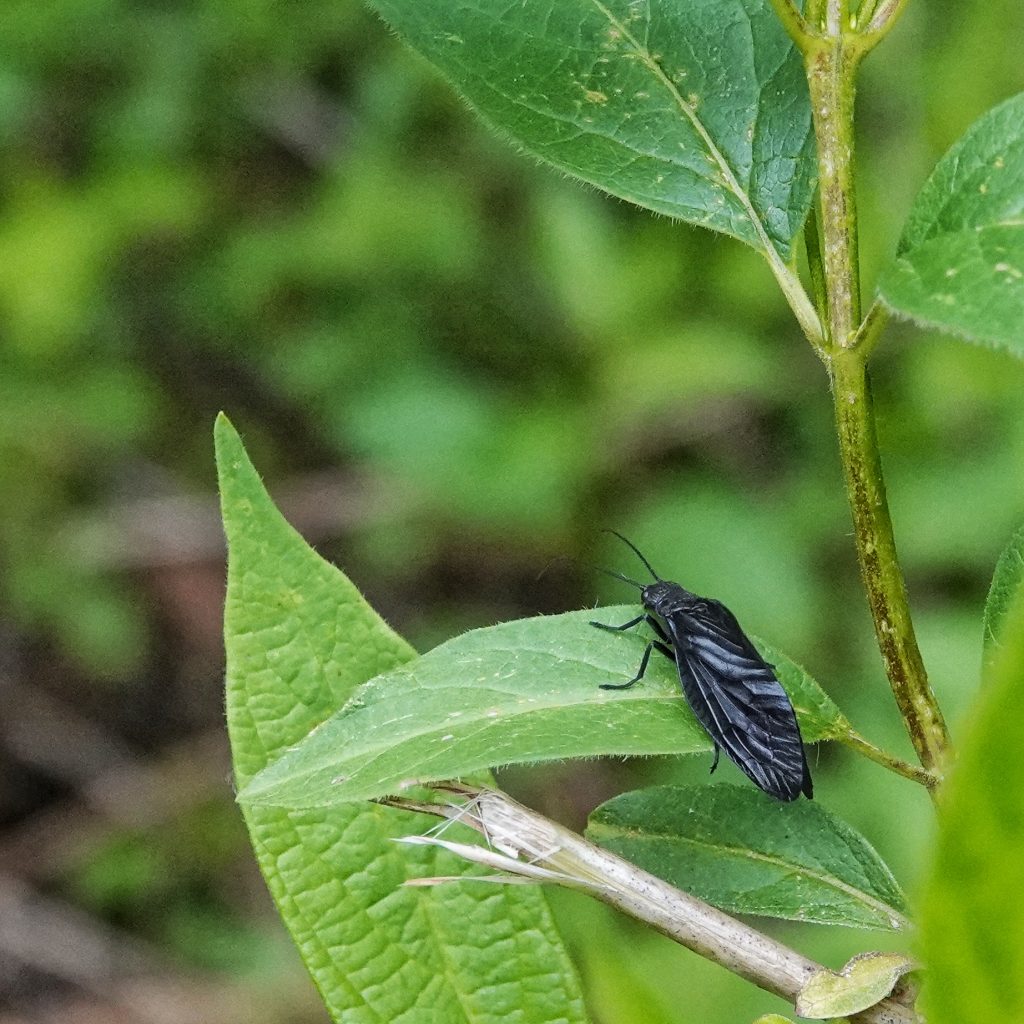
These are weak fliers that don’t purposely land on the water surface, and sink almost immediately if they do. The female’s ovaries fill the abdomen and extend into the thorax, and the egg mass significantly restricts her ability to fly. But both sexes, especially the males, are active near the water on warm days, sometime en masse. The larvae are aquatic, but the eggs are laid terrestrially, on overhanging brush and other structures, from which they fall into or near the water after hatching. They then leave the water the following year to pupate on land, emerging as the winged adults we call alderflies. Alderflies are an important part of whatever ecosystem they are in, preying on everything smaller than themselves, and as prey for every carnivore larger than they are. For those wanting more detailed information on these cool bugs, I highly recommend reading this paper on the life history of these two species (Azam/Anderson; 1969)
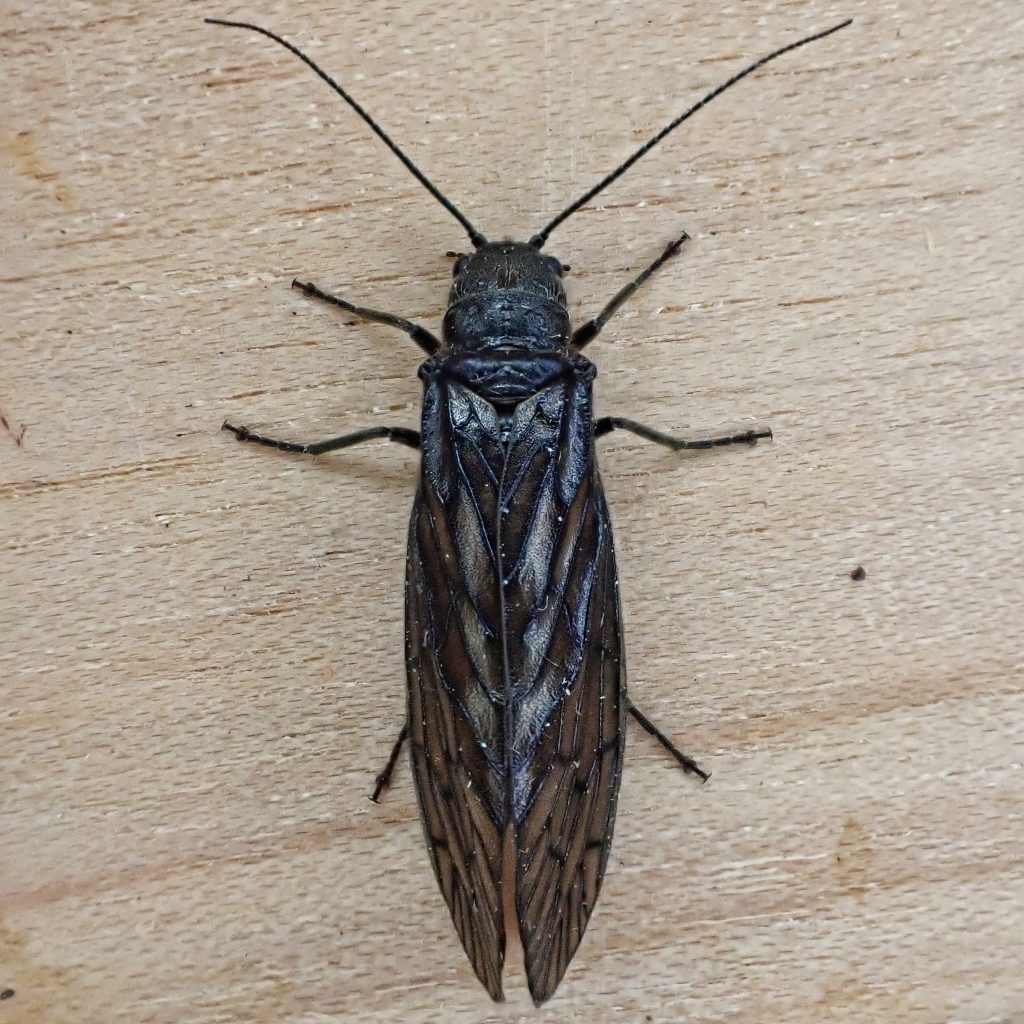
Description-Medium sized (up to 14mm long, though S. californica tend to be larger), with dark bodies and dark, smoky grey wings that are steeply tented when at rest; wings are translucent and the venation is bold; lack ocelli (secondary, rudimentary eyes) atop head; lack ‘tails’, a fact I hadn’t noticed until I started trying to imitate them with a fishing fly.
Similar species–Sialis spp. can only be positively identified by microscopic examination; dobsonflies and fishflies are larger, do not tent their wings, and have ocelli on their heads; lacewings have less tinted wings with many more crossveins; caddisflies have hairy wings, and long ‘tails’.
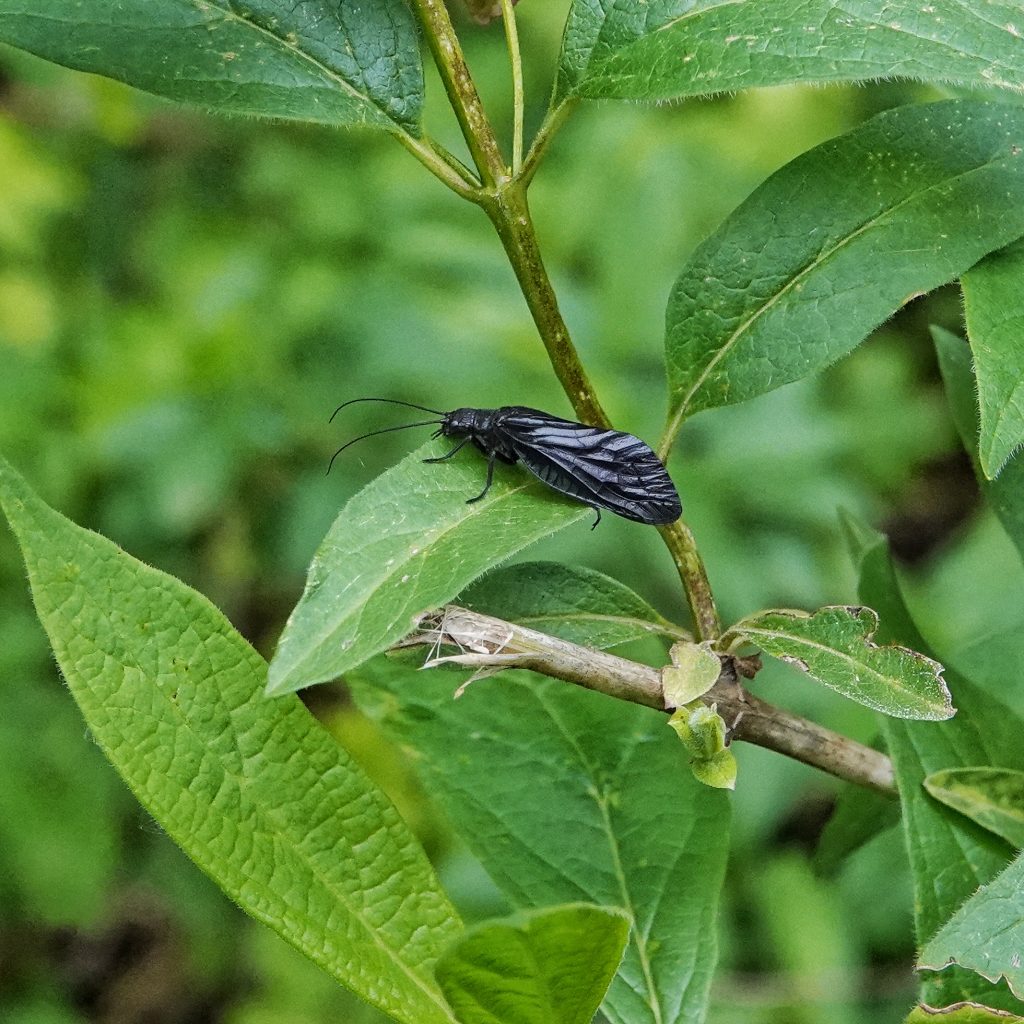
Habitat– Primarily ponds and other still to very slow water, with muddy bottoms and abundant detritus, although they may be found in sloughs and backwaters of streams and rivers;(S. californica is found primarily in and near streams and rivers)
Range-Western North America; S. rotunda is found region wide in appropriate habitat; S. californica is found west of the Cascades and into California, with a disjunct population in ne Oregon.
Eats-Larvae are indiscriminate predators of bottom dwelling arthropods and other invertebrates; adults do not feed.
Eaten by– Eggs are parasitized by the chalcidoid wasp Trichogramma semblidis; fish, frogs, dippers, shorebirds, and larger invertebrates prey on the larva and adults, and other insectivorous birds prey on the adults.
Adults active-April through June for S. rotunda; (May-July for S. californica)
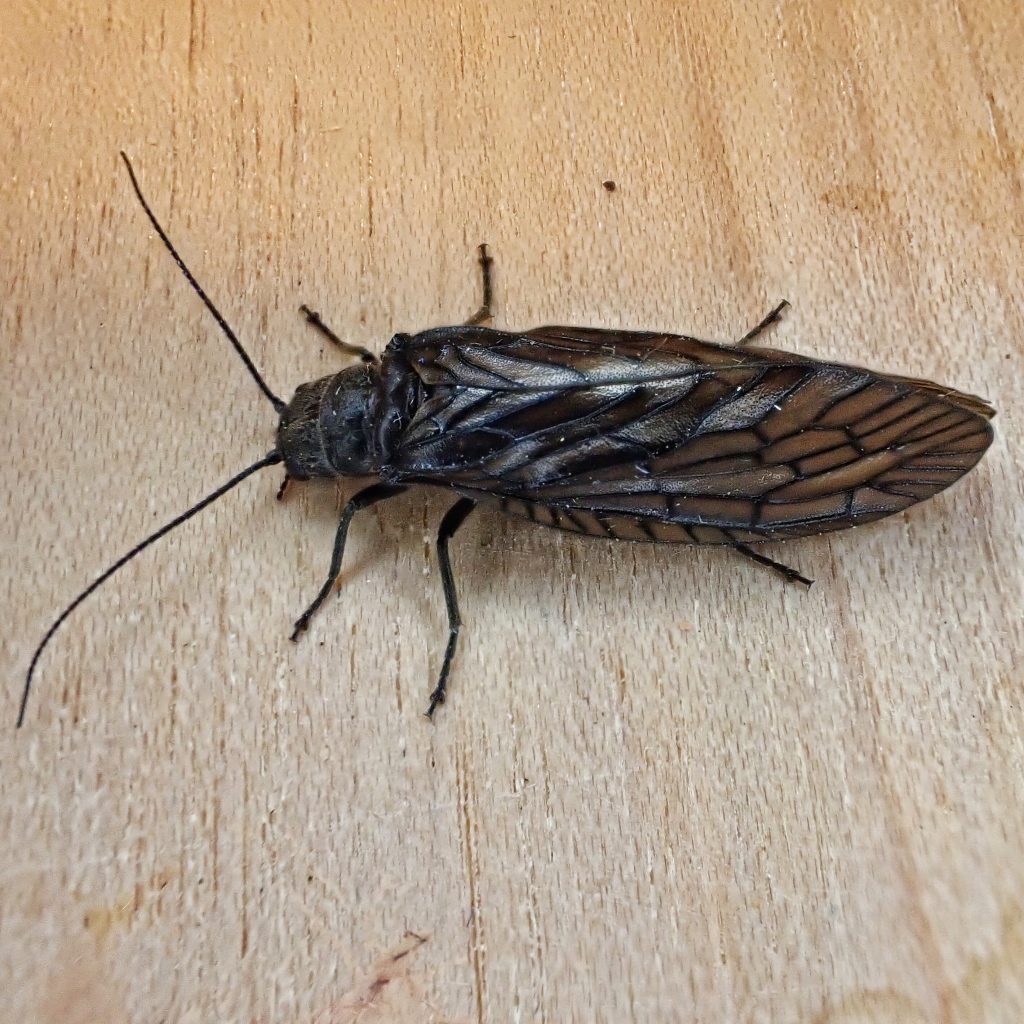
Life cycle-Males place a spermatophore on the tip of the female’s abdomen, and the sperm wriggle free fairly quickly, so that copulation only lasts a couple minutes; eggs hatch 8-12 days after ovipositing; females lay 300-700 eggs, usually in a large cluster; eggs are laid on vegetation, rocks, and other objects overhanging the water, so that the larvae fall into or near the water; larval stages take 10-11 months, and there are usually 10 instars (some S. californica may take 2 years to mature if they hatch late in the season or there is limited food, and in general take about a month longer to complete their larval stages than S. rotunda); pupation occurs in soil near their natal water body; adults live 2-3 weeks
Etymology of names–Sialis is from the Greek word for ‘a kind of bird’. I cannot ascertain what that references, though it may just be that they are a fairly large flying insect. The specific epithet rotunda is from the Latin word for ‘round’, but I have no idea what that refers to. The specific epithet californica refers to the location of the type specimen.
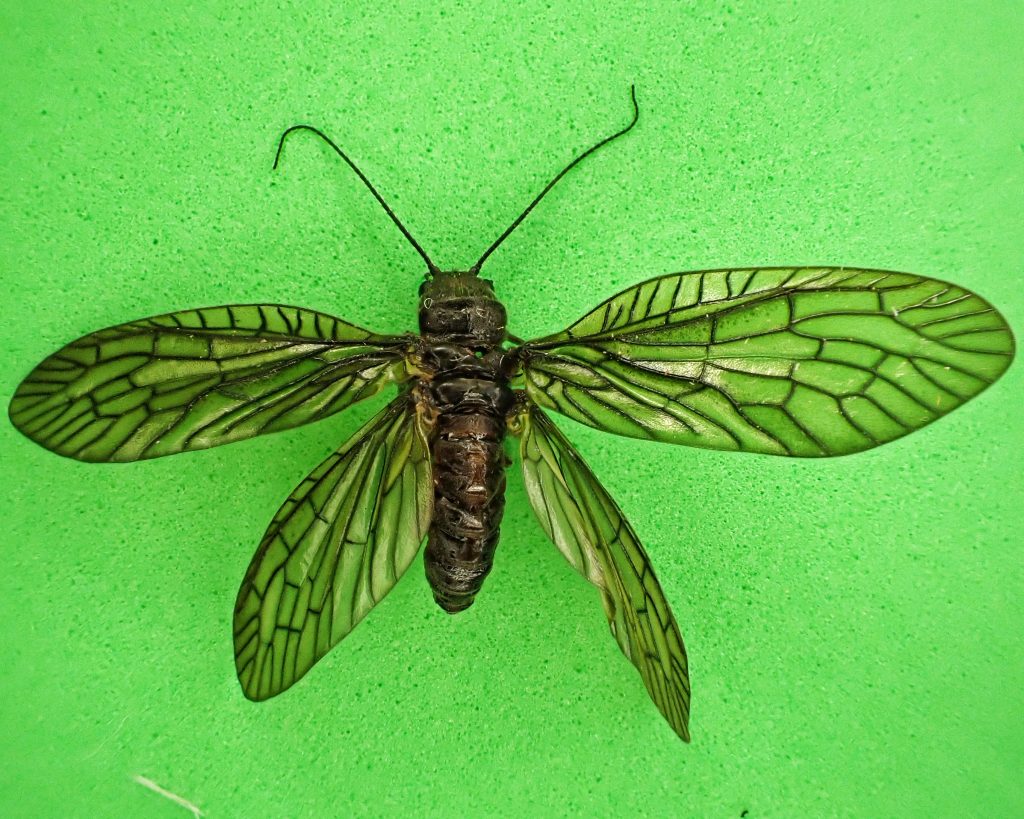
https://bugguide.net/node/view/16957
Sialis rotunda – Google Scholar
http://www.americaninsects.net/n/sialidae.html
https://entomology.unl.edu/scilit/Tim%20Wucherer%27s%20Alderfly%20Beneficial%20Profile.pdf
https://mdc.mo.gov/discover-nature/field-guide/alderflies
https://lacewing.tamu.edu/neuropterida/neur_bibliography/edoc12/engel2018ref16333-19503.pdf
